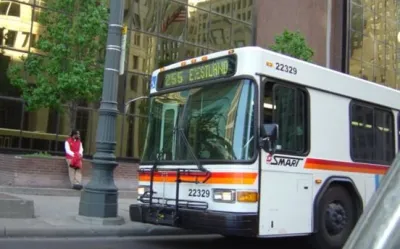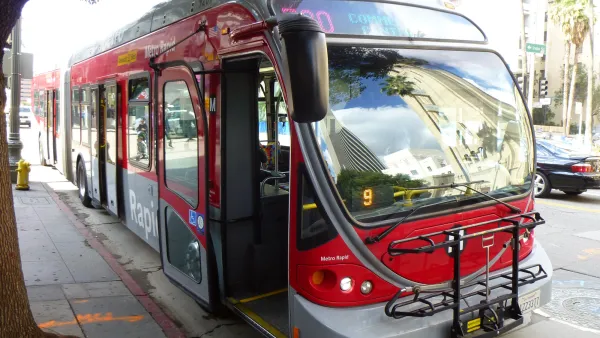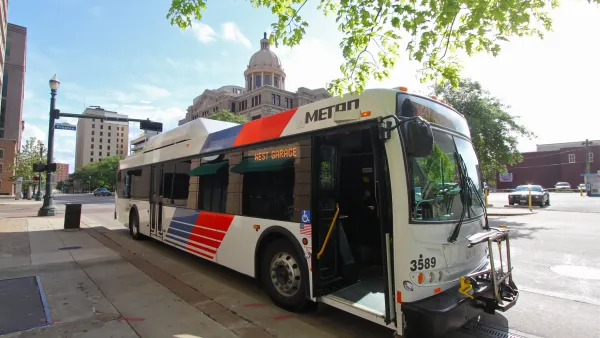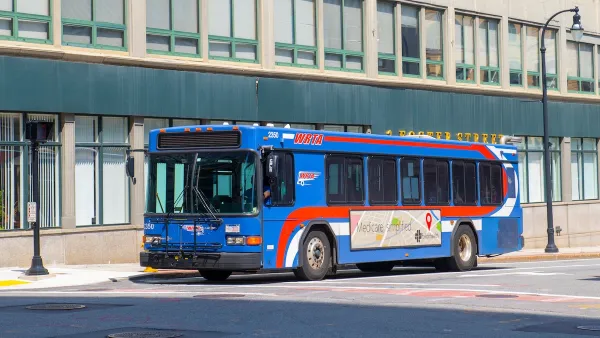Transit advocates worry that the movement to eliminate fares will come at a high cost to transit-dependent riders who rely on frequent, reliable service to reach jobs and services.

While many transit agencies are considering reducing or eliminating fares to boost ridership, some policymakers worry that the lost revenue will have a negative impact on transit service and the people who rely on it, writes Luz Lazo in The Washington Post.
Local transportation and political leaders say that while the pandemic has harmed transit, it also highlighted its critical role for 'essential' workers. Many kept riding to get to jobs at grocery stores, restaurants and hospitals as workers with more flexibility stayed home. Bus ridership has fared better than rail ridership during the pandemic, in large part because of service workers.
With fare revenue sometimes covering as much as a quarter of transit operations, agencies that eliminate fares must rely more heavily on other local, state, and federal funding sources. In the Washington D.C. region, Lazo writes, "loss of fare revenue would translate to nearly $170 million that jurisdictions would need to find from federal, state or local sources."
Lazo details the fare reduction proposals of various D.C.-area agencies, but cites surveys showing that frequency and convenient routes play a more important role in whether people choose to use transit than cost. Reduced fares can encourage more people to use public transportation, but only if it takes them where they need to go. Meanwhile, riders who rely on it worry that reduced service will make it even more difficult to get around.
The concept of fare-free transit picked up steam during the pandemic as transit agencies sought ways to bring riders back. Advocates say eliminating fares is an important step toward transit equity. And, to be clear, the structural deficits of transit operations still threaten the future of public transit.
FULL STORY: Bus systems are eyeing lower fares, leaving passengers and advocates to wonder at what cost

National Parks Layoffs Will Cause Communities to Lose Billions
Thousands of essential park workers were laid off this week, just before the busy spring break season.

Retro-silient?: America’s First “Eco-burb,” The Woodlands Turns 50
A master-planned community north of Houston offers lessons on green infrastructure and resilient design, but falls short of its founder’s lofty affordability and walkability goals.

Delivering for America Plan Will Downgrade Mail Service in at Least 49.5 Percent of Zip Codes
Republican and Democrat lawmakers criticize the plan for its disproportionate negative impact on rural communities.

Test News Post 1
This is a summary

Test News Headline 46
Test for the image on the front page.

Balancing Bombs and Butterflies: How the National Guard Protects a Rare Species
The National Guard at Fort Indiantown Gap uses GIS technology and land management strategies to balance military training with conservation efforts, ensuring the survival of the rare eastern regal fritillary butterfly.
Urban Design for Planners 1: Software Tools
This six-course series explores essential urban design concepts using open source software and equips planners with the tools they need to participate fully in the urban design process.
Planning for Universal Design
Learn the tools for implementing Universal Design in planning regulations.
EMC Planning Group, Inc.
Planetizen
Planetizen
Mpact (formerly Rail~Volution)
Great Falls Development Authority, Inc.
HUDs Office of Policy Development and Research
NYU Wagner Graduate School of Public Service





























